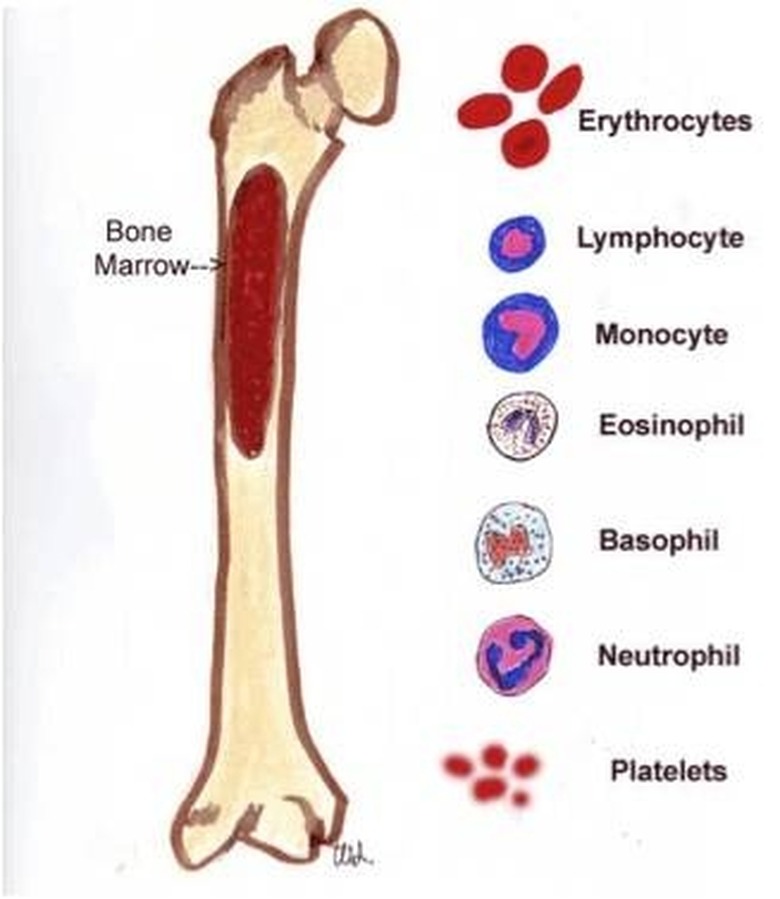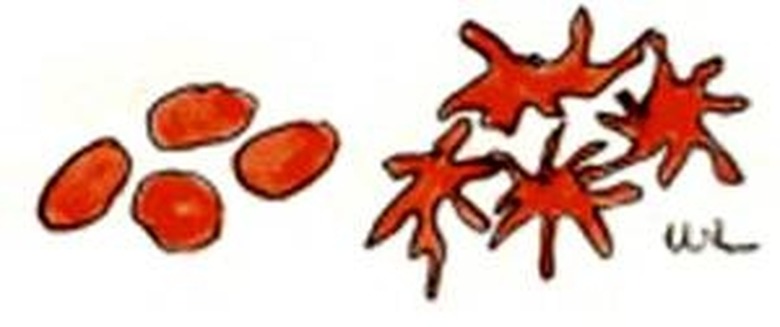Which Part Of The Body Makes Blood?
Blood Composition
Blood Composition
Blood is comprised of about 78 percent fluids and 22 percent solids. The primary components include plasma (the liquid portion), red blood cells (erythrocytes), white blood cells (lymphocytes, monocytes, eosinophils, basophils and neutrophils) and platelets. All of the blood cells arise from your bone marrow, primarily of the long bones in the arms, legs, back and sternum. Bone marrow has yellow marrow, which contains fat, and red marrow, which contains hematopoietic (blood-forming) stem cells.
Plasma
Plasma
Plasma carries the blood cells as well as antibodies, vitamins, minerals, electrolytes (such as sodium, calcium and potassium), proteins and clotting factors (which help the blood to clot) throughout the body. When you eat and drink, nutrients and fluids are absorbed into the blood from the small and large intestine, replenishing the plasma and allowing it to circulate the blood cells and nourish the body systems.
Red Blood Cells
Red Blood Cells
Red blood cells (erythrocytes) comprise about 40 percent of the blood. Red blood cells produce hemoglobin, which carries oxygen from your lungs to the tissues and carbon dioxide back to your lungs. Red blood cells are formed in your bone marrow and become disk-shaped as they mature, allowing them to change shape to get through narrow vessels. They normally live about 120 days. When oxygen levels in the blood begin to fall, your kidneys secrete erythropoietin to signal the bone marrow to increase production of red blood cells. Sometimes, if your body is anemic, the bone marrow tries to produce more and more red blood cells to compensate, causing release of reticulocytes (immature red blood cells).
White Blood Cells
White Blood Cells
White blood cells (leukocytes) are also produced in your bone marrow and comprise only about 1 percent of the blood volume; however, they increase in number in response to body needs, such as with infection, injury or allergies. The different types of white blood cells specialize in different defense mechanisms to protect the body. Most white blood cells mature outside of the bone marrow in lymphoid tissue, such as in the adenoids, spleen or thymus. Many do not circulate all of the time but "rest" until activated.
Platelets
Platelets
Platelets (thrombocytes) are fragments that break off a large cells called megakaryocytes. The megakaryocytes mature and remain in your bone marrow, but as the platelets break off, they enter your blood stream as small disk-shaped fragments. When an injury or bleeding occurs, the platelets change shape, growing pseudopodia (false feet), allowing them to stick together to form a clot.
References
Cite This Article
MLA
Lockwood, Wanda. "Which Part Of The Body Makes Blood?" sciencing.com, https://www.sciencing.com/part-body-blood-5143189/. 24 April 2017.
APA
Lockwood, Wanda. (2017, April 24). Which Part Of The Body Makes Blood?. sciencing.com. Retrieved from https://www.sciencing.com/part-body-blood-5143189/
Chicago
Lockwood, Wanda. Which Part Of The Body Makes Blood? last modified March 24, 2022. https://www.sciencing.com/part-body-blood-5143189/

